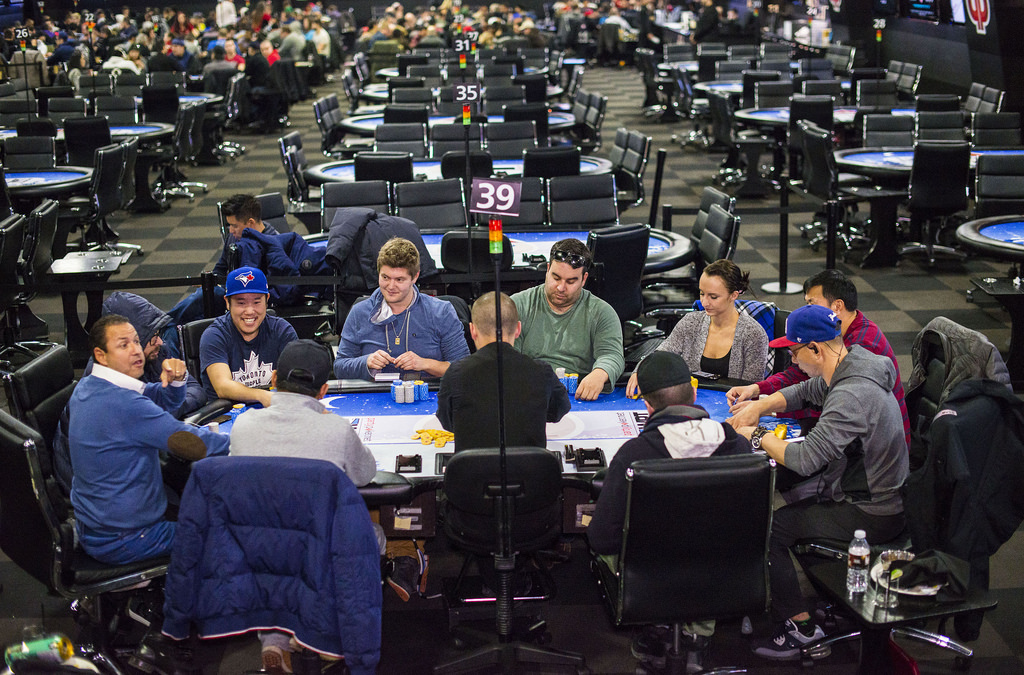It is accepted among the poker fraternity that position is one of the most precious commodities a poker player can have at the table. By playing “in position,” you will be able to extract the maximum amount of information about your opponents’ hands before you make a decision about the strength of yours. If you’re new to the term playing in position, it means that you are one of the last players to act in a hand, i.e. having the dealer button or sitting to the right of the dealer.
Photo by World Poker Tour, CC BY-ND 2.0
In a strategy for beginners, playing more hands in late positions gives you more flexibility and options as each hand plays out. When you are playing in position, you can impose your playing style on other players. It’s one of the key skills to becoming a success at the tables. Conversely, if you’re playing out of position, you’re likely to be dictated to by other players that can act later in the hand. Let’s say you are playing out of position and are one of the first to act and there are two players acting behind you. In this hand, you will have no information on the strength of their hand before you make your play. On the flip side, if you are acting last, perhaps on the dealer button, you can see how confident each player is in the strength of their hand by how many chips they commit to the pot from the outset.
When you’re starting out on your poker journey, you’ll no doubt have read about the “tight and aggressive” (TAG) strategy. This involves playing only the strongest pairs and suited connectors in late positions and folding all the other hands. As a starting point, this is the way to understand the dynamics of a poker game. You’ll almost always have the last word on what the bet is on each hand you play, and your opponents are forced to play an anxious form of poker, unaware of what you’re going to do next. This alone can force errors and moneymaking opportunities at the tables.
Furthermore, if you decide to loosen up the hands you play, the best way to get creative is to do so while in position. Small pairs and lower-suited connectors aren’t a good hand to play in early position, especially if your initial call is met with a hefty raise by someone in a late position. However, if the action comes around to you in a late position and there’s no one showing any strength in the hand, you might get the opportunity to catch a cheap flop and rake in a big pot. As you gain experience and become more aggressive, you’ll benefit from reading “The Raiser’s Edge,” a collaborative book written by leading poker pros Bertrand “ElkY” Grospellier, Lee Nelson, Tysen Streib and Tony Dunst.
If you commit to playing most of your hands in a late position, you are already well on the way to becoming a profitable poker player. It’s the best way to dominate opponents as you have maximum information without having to commit any chips to the pot. Now is the time to stop playing no-good hands from out of position. This playing style is akin to throwing your cash down the drain.

